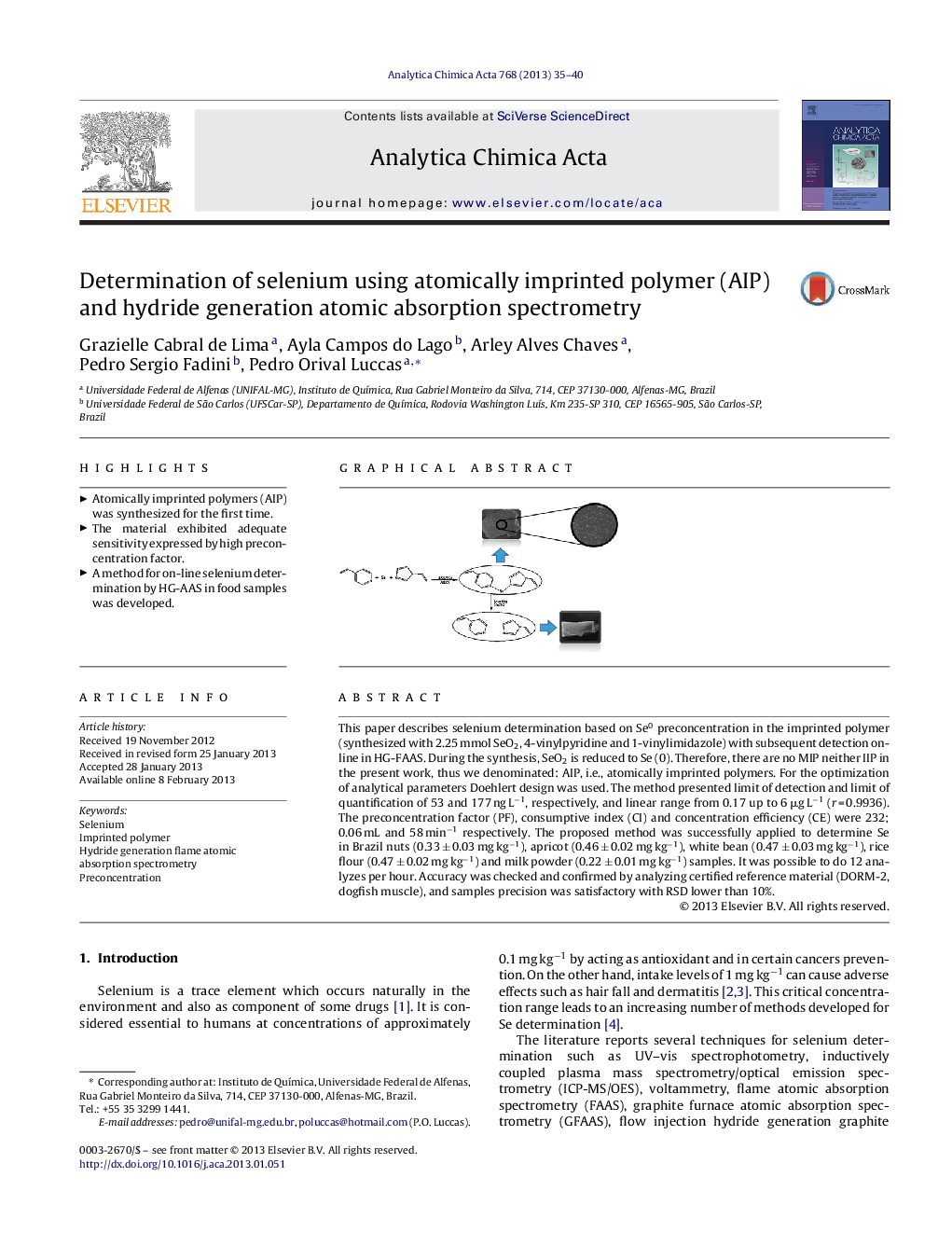| کد مقاله | کد نشریه | سال انتشار | مقاله انگلیسی | نسخه تمام متن |
|---|---|---|---|---|
| 1165199 | 1491064 | 2013 | 6 صفحه PDF | دانلود رایگان |

This paper describes selenium determination based on Se0 preconcentration in the imprinted polymer (synthesized with 2.25 mmol SeO2, 4-vinylpyridine and 1-vinylimidazole) with subsequent detection on-line in HG-FAAS. During the synthesis, SeO2 is reduced to Se (0). Therefore, there are no MIP neither IIP in the present work, thus we denominated: AIP, i.e., atomically imprinted polymers. For the optimization of analytical parameters Doehlert design was used. The method presented limit of detection and limit of quantification of 53 and 177 ng L−1, respectively, and linear range from 0.17 up to 6 μg L−1 (r = 0.9936). The preconcentration factor (PF), consumptive index (CI) and concentration efficiency (CE) were 232; 0.06 mL and 58 min−1 respectively. The proposed method was successfully applied to determine Se in Brazil nuts (0.33 ± 0.03 mg kg−1), apricot (0.46 ± 0.02 mg kg−1), white bean (0.47 ± 0.03 mg kg−1), rice flour (0.47 ± 0.02 mg kg−1) and milk powder (0.22 ± 0.01 mg kg−1) samples. It was possible to do 12 analyzes per hour. Accuracy was checked and confirmed by analyzing certified reference material (DORM-2, dogfish muscle), and samples precision was satisfactory with RSD lower than 10%.
Figure optionsDownload as PowerPoint slideHighlights
► Atomically imprinted polymers (AIP) was synthesized for the first time.
► The material exhibited adequate sensitivity expressed by high preconcentration factor.
► A method for on-line selenium determination by HG-AAS in food samples was developed.
Journal: Analytica Chimica Acta - Volume 768, 20 March 2013, Pages 35–40